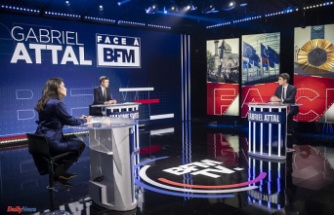American shoppers continue to be hit hard by high prices. Inflation rose faster than anticipated to 7.5 percent in January, surpassing the 40-year record set in December.
On Thursday, the Bureau of Labor Statistics released the latest monthly Consumer Price Index. It shows that prices have increased most in shelter, electricity, and food.
The indexes of food and energy both rose by 0.9 percent. Shelter's index rose by 0.3 percent.
The core consumer price index (which excludes volatile food and energy indicators) rose 0.6% in January, which was the same as December.
Indexes for household furniture and operations increased by 1.3 percent, used vehicles and trucks rose by 1.5 percent, while medical care increased 0.7 percent and apparel rose by 1.1 percent.
Despite earlier statements by Jerome Powell, Federal Reserve Chair, that they would only be temporary, the rise in consumer prices seems to be continuing.
As demand rose and shifted during the pandemic and caused supply chains to snag and back up ports, manufacturers raised prices on all products, food, home goods, and car parts.
According to NielsenIQ supermarket checkout data, January saw the highest increase in egg prices, rising 11 cents per year, according the NBC News grocery tracker. The most significant increase was in orange juice, which rose 12 cents. Although bacon prices fell by 5 cents, they remain high at $1.24 compared to a year ago.
However, major manufacturers have begun to renegotiated their annual supply contracts in the fourth quarter. This means that they are not only passing on increased input, labor, and transportation costs to consumers but also increasing their profit margins.
Amazon, Mattel, Starbucks, Mattel, and Disney recently announced possible price increases for 2022.
These consumers with a high demand for goods and services, and increased access to credit and savings, have generally ignored these increases and continued to shop and swipe.
"Despite heroic efforts, a record-setting year of production, we were not able to keep pace with the accelerating consumer demand," Michele Buck (chief executive and chairman of Hershey Co.), said last week during an earnings conference. The company, like many other manufacturers, is working to increase labor and production. It added four lines in the last year but pointed out that the omicron surge was increasing worker absenteism as well as slowing down output. She said that the hamstringing would continue "until half-way through the year." It would be "optimizing the promotional calendar" in the interim.
Following the March pandemic, manufacturers cut coupons and promotional offers. Although they have reduced some promotions, they have not returned to the pre-pandemic levels.
Joe Biden, President of the United States, responded to Thursday's latest numbers by calling them "reminders that Americans are being stretched in ways which create real stress at home."
"While today's report may be elevated, forecasters continue projecting inflation easing substantially by 2022," Biden stated, pointing out rising wages and lower unemployment as silver-linings to the data.
It is not clear how long consumers will be able to stomach price increases. A new survey by eMoney of adult Americans found that gas prices, inflation, and the ability to pay their bills were the top three concerns in 2022.
Celeste Revelli (director of financial planning at the site) stated in a statement that "major economic issues are affecting Americans everyday, from high gas prices and inflation." People are more concerned about their families' futures than ever and are seeking ways to prioritise their responsibilities and attain financial peace of mind.
The Federal Reserve announced three price increases in 2022 to try and curb inflation, which shows no signs of slowing down. The first will begin in March.
Stocks dropped Thursday morning after the inflation number beat consensus expectations that had only predicted a 7.2 percent rise.
The Nasdaq Composite dropped 1.7 percent, while the S&P 500 fell 1.1 percent. Meanwhile, the Dow Jones Industrial Average lost 230 points or 0.6 percent.












